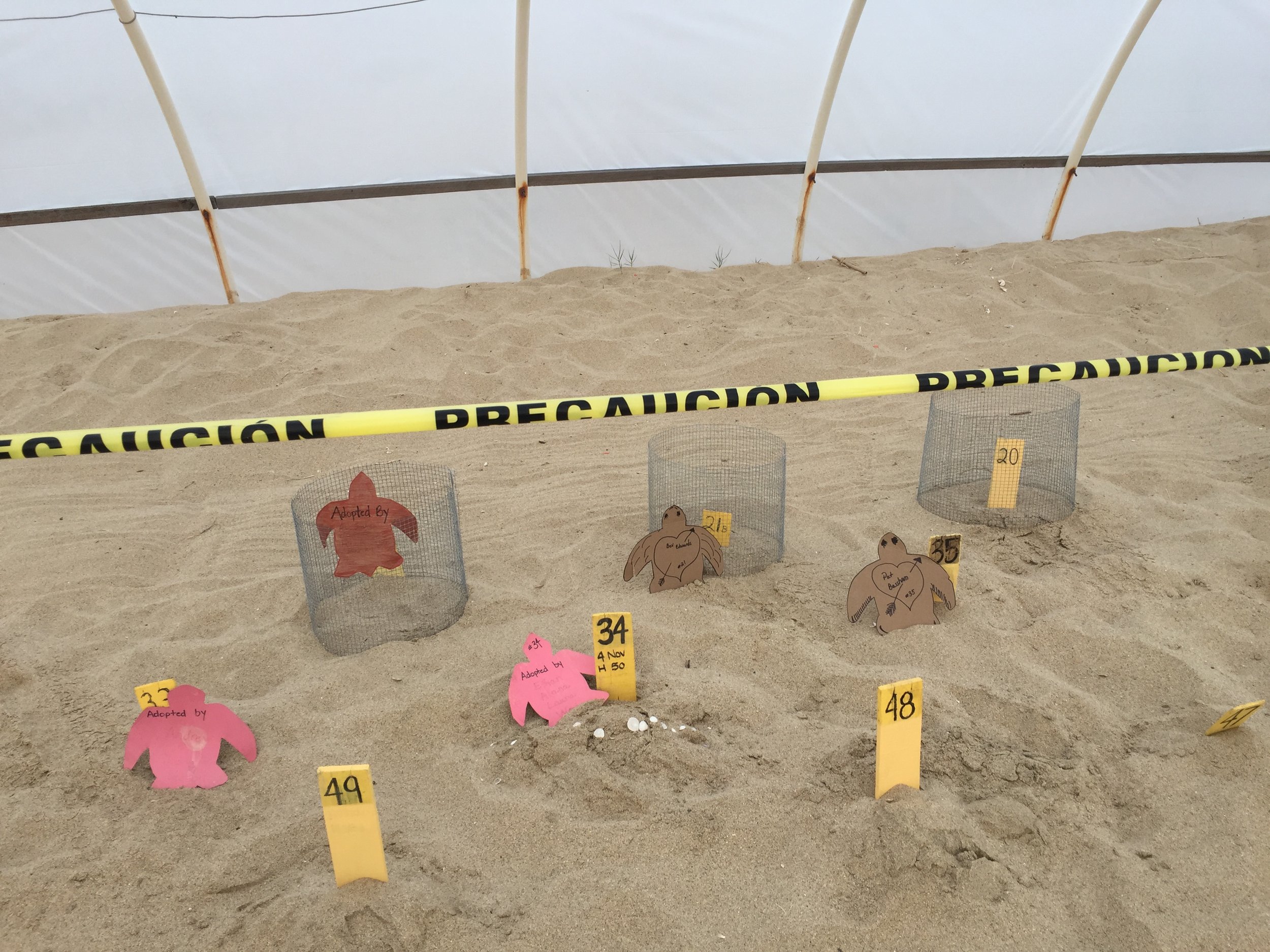Saving Baby Turtles with Tortugueros Las Playitas A.C.
In January I was lucky enough to be back in Todos Santos, and lucky enough that while wasting time scrolling through Facebook (not recommended but sometimes useful) I saw the announcement that Tortugueros Las Playitas A.C. was doing a turtle release that very evening.
I showed up about 5 minutes before the designated release time to a beach crowded with families, couples, tourists and locals all milling about, happily awaiting the turtle release and the sunset.
While you're waiting for the main event, you may tour the greenhouse, where turtle eggs are incubating in warmth safe from birds and other predators prior to being released. Sets of eggs are marked with the names of donors and sponsors, and you could sponsor some too. On my trip I noticed a nest in honor of Erin's 30th Birthday and a bachelorette party too. Good to see people gathering a little good karma amidst party time!
Perhaps the most impressive of the evening’s event were the two turtle experts running the show. Really, when I was their age, paralyzing shyness left me barely able to order a happy meal from the stranger at the McDonald’s counter, much less articulate a presentation on sea turtles, their precarious lives, and what we can do to help save them. These kids were well spoken in both Spanish and English, and kept the crowd engaged and organized.
My favorite was how they kept this sweet dog at bay. (below) Thanks to the efforts of this rescue group, their volunteers and donors, these turtles will in the least have a fighting chance by making it to the sea.
Left on the beach in their own shallow nests, turtles face the threat of birds, dogs, and wild animals, as well as humans. Unfortunately, humans still do eat turtle eggs, or sell them, and even a well-intentioned fun loving Baja folk is likely to destroy a shallow nest by driving the beach in a quad, motorcycle or car.
At hatchling release time, our hosts gathered everyone on the beach, lined up past the tide line to prevent footprints in the sand from making the long journey even longer for these little guys. Once out of their buckets, the turtles magically start ‘paddling’ towards the ocean. Watching them navigate the oncoming waves is a great reminder of how fragile life is, and of the luck that’s involved in survival. Be that the luck of strong genes, a determined personality, or on that evening, an outgoing tide.
The cheer the crowd let out when the first turtle got swept up into the sea was pure, heartwarming joy. A compassion-building experience for all ages.
Tortugueros Las Playitas rescues Olive Ridley turtles, Black turtles and Leatherbacks. These little guys are Olive Ridley turtles. Found mainly in the Pacific and Indian Ocean, and also in the warm waters of the Atlantic, they are the most widely distributed of sea turtles, but listed as vulnerable and facing a high probability of extinction. Rapidly disappearing nesting habitat and the threat of net fishing and longline fishing, a style of commercial fishing that's of high risk to sea turtles, leads to dwindling populations. The belief that eggs are an aphrodisiac, and the high prices garnered for turtle shells influences illegal egg collection in the Americas; a sad reality that was once much worse, but which many sea turtle populations never recovered from.
Black turtles, also known as Pacific Green turtles, are in the same family as the Green Sea turtle and nest all along the Mexican Pacific coast. Black turtles are also listed as endangered due to loss of nesting habitat, pollution, casualties of fishing bi-catch and human egg harvesting. The most dangerous time in the baby turtle's life is the hatchling's journey from the nest back to the ocean. Some estimates posit that only 1% of black turtles reach the age of sexual maturity, which can take up to 50 years.
Leatherbacks are the largest sea turtles and migrate across both the Atlantic and Pacific to lay their eggs. After the age of 15-25, mothers return to the beach where they were born to lay their eggs. During nesting season, they stay nearby, and may lay eggs every 10 days for 3-4 months. Males spend their entire lives at sea. The majestic animals are threatened by nesting habitat loss, egg collection and fishing bi-catch. With a diet of jellyfish, they also face starvation by consuming floating plastic which is easily mistaken for jellyfish in the sea.
Tortugueros estimates they save 10,000 eggs each year. Of those eggs, some will be infertile, some will not successfully hatch, and approximately 7,500 are annually released into the sea. This may sound like a lot of turtles, but each of these species is currently listed as vulnerable, threatened or endangered.
At this site in Todos Santos, nest relocation for Olive Ridley turtles, Black turtles and Leatherback turtles take place October through April, while the hatchling releases take place December through June, varying by the species. There's almost always something going on at Tortugueros Las Playitas, and there's most likely a way that you or your group may participate in an educational activity whenever you visit. Check out this once-in-a-lifetime event when you're in Todos Santos, donate here, or if you're lucky, return again and again each time you're in Baja.








